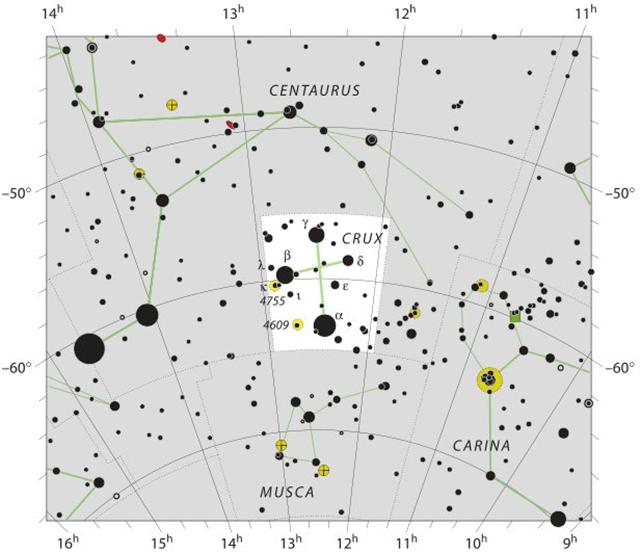With equinox 'any time from the 22nd to the 24th day of September' according to Wikipedia a new season ought to begin soon beyond the drilled hole:
There is no drilled hole before Ka1-3 but the margin of the tablet may have restrained carving glyphs just beyond. In a way it is the mirror image of the situation just before *Kb2-6. Evidently 'the season of Raven' ought to begin around 12h counted from the northern spring equinox and indeed at the precessional time of my astronomy book Alchita (α Corvi) rose heliacally just minutes later (12h 06m). However, using the Gregorian time frame of reference September 22 could be the ideal date because then there would be 100 days to the end of the year:
The stars of the Southern Cross were beginning to rise heliacally around the September equinox and first out was Pálida (δ):
Even further down the Southern Fly would have been visible, and the constellation began to rise heliacally already with λ in day 177 after the northern spring equinox:
Although ε Muscae was simultaneous with Pálida, 8 days later than λ. | ||||||||||||||||||||||||||||||||||||||||||||||||||||||||||||||||||||||||||||||||





